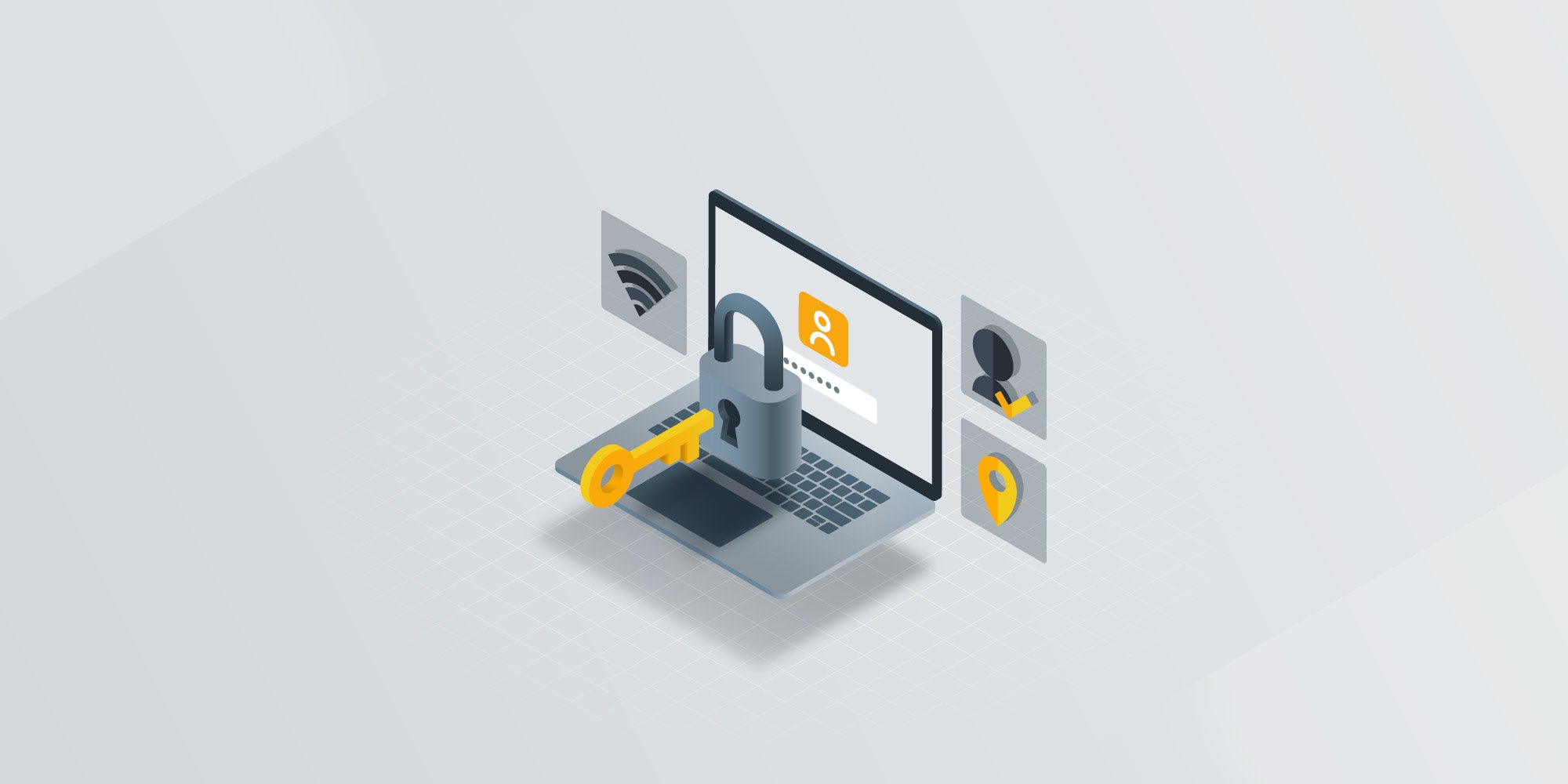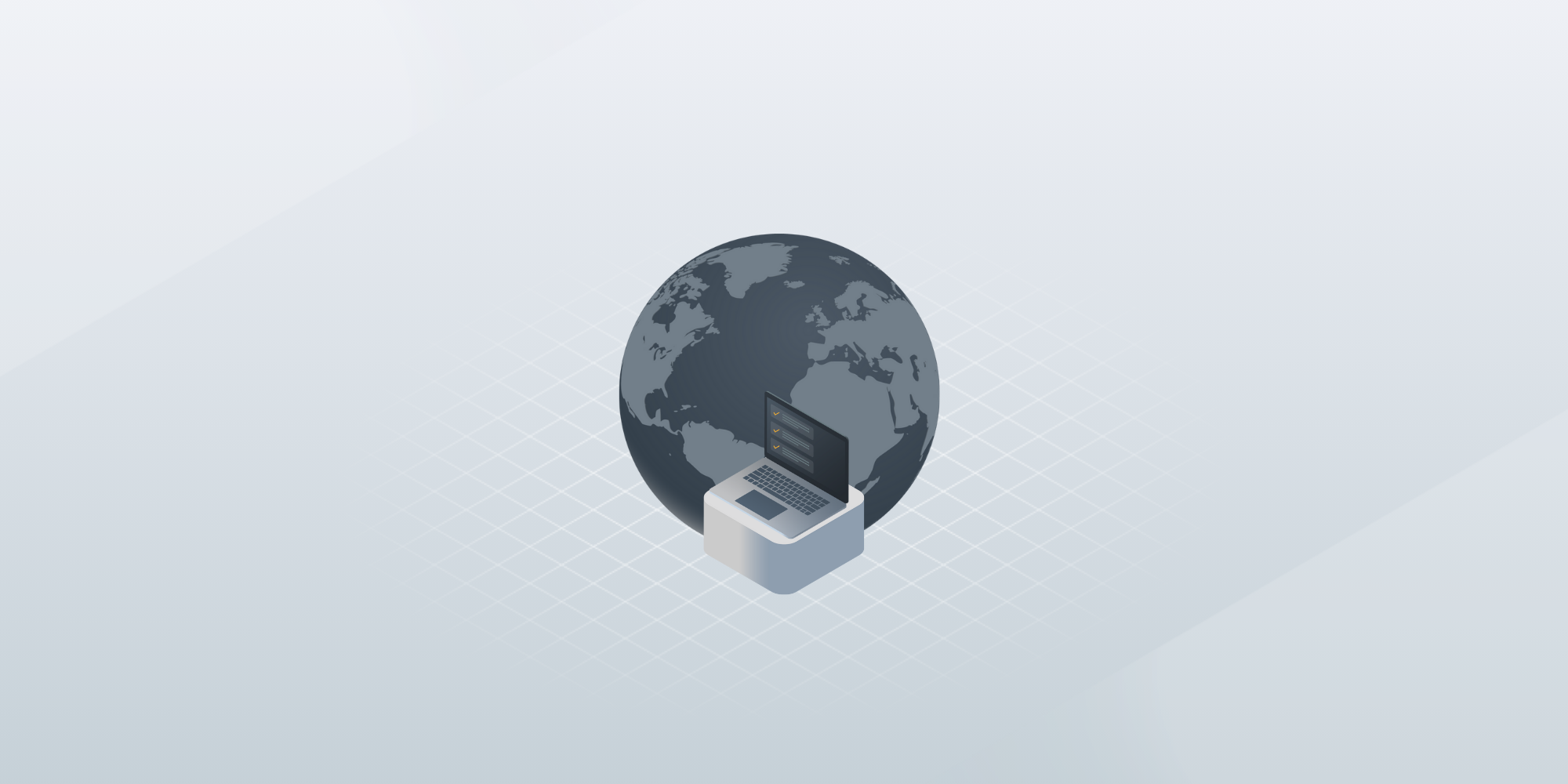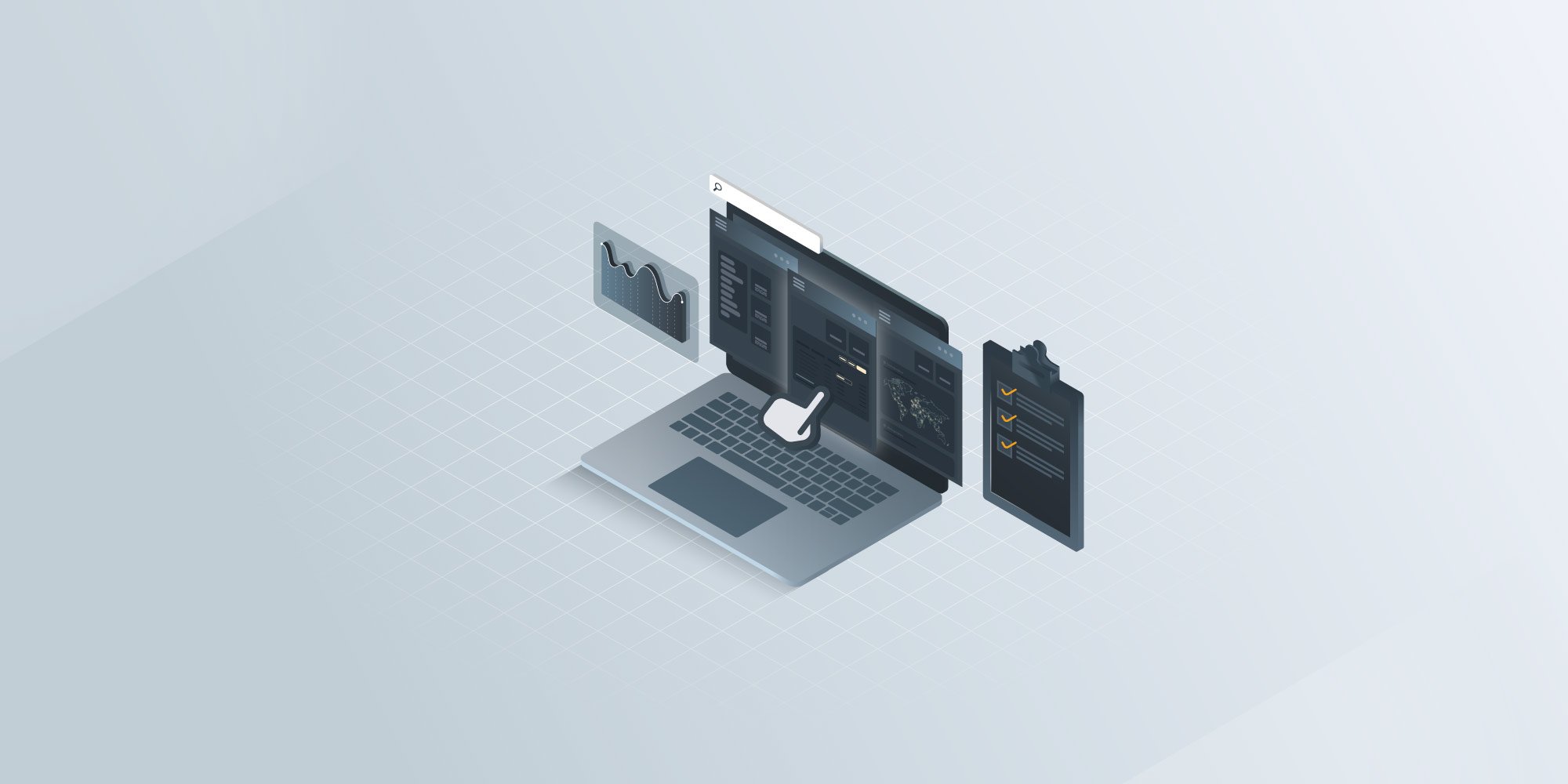Top 16 computer inventory management software for 2025
 Mara Quintanilla
Mara Quintanilla
Distributed teams and remote work are quickly becoming the de facto work arrangements for many companies, opening up a massive gap for their IT departments. Because too many devices are spread out over huge geographic areas, companies can no longer rely on internal solutions to manage their computer inventory. That is one of the reasons the inventory management software market is projected to be worth $2.51 billion in 2025 and reach $4.79 billion by 2032
Effective computer inventory management software ensures that your team has the necessary resources, reduces downtime, and optimizes asset utilization, allowing businesses to run smoothly. Implementing scalable solutions for computer inventory management software becomes paramount to addressing this challenge. This approach accommodates the dispersed nature of remote work and provides the flexibility needed to scale IT operations across diverse locations.
Let's dive into the article so you can make an informed choice that will elevate your business to new heights.
What is a computer inventory management software?
%201.02.16%20a.%20m..png?width=600&height=308&name=Captura%20de%20pantalla%202024-04-17%20a%20la(s)%201.02.16%20a.%20m..png)
A computer inventory management system is software that tracks computer assets throughout their lifecycle within an organization’s systems environment.
They usually offer discovery and tracking capabilities that allow IT managers to view their Windows, macOS, or Linux devices comprehensively. Computer inventory management software can record everything from serial numbers to login information, including files, directories, storage devices, installed software, task history, and software updates.
IT administrators can later use this data to plan hardware and software purchases, manage hardware and software inventory, and diagnose network issues efficiently.
What does computer inventory management software do?
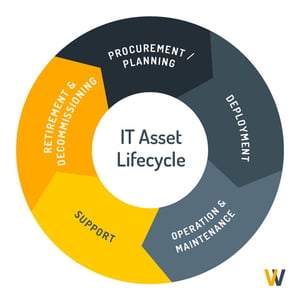
It’s all about automation. Computer inventory software significantly simplifies the complex tasks of tracking, monitoring, and analyzing computers and applications.
The standout feature of these tools is a central place where IT managers can access real-time data about their company's IT assets. IT admins can stay ahead of procurement, maintenance, or potential vulnerabilities by collecting information about computer location, status, and configuration in a single dashboard.
In addition to hardware inventory software and tracking, computer inventory software can monitor applications, including third-party software, ensuring that they are updated and patched as required. It generates comprehensive reports, clearly communicating the findings of device analysis and software tracking.
Best 16 computer inventory software to use in 2025
From seamless integration to real-time monitoring and reporting, the following solutions simplify the complex task of managing computer inventory, enabling you to focus on what matters most: growing your business.
GroWrk
GroWrk is an end-to-end computer inventory management software solution that streamlines IT equipment procurement, deployment, and management for globally distributed companies. GroWrk’s platform follows the entire network asset lifecycle from purchase to disposal.
The GroWrk Dashboard offers visibility over existing assets for global teams through a centralized location. No matter where teams are located, everything is accounted for and easy to pinpoint. This way, teams can automate their IT needs and scale quickly.
Key features and benefits
- AI-powered IT Support that’s available 24/7/365
- Computer inventory management
- Integrations with HR and IT systems
- IT asset tracking
- Depreciation tracker
- Maintenance and device swaps
Pros
- Streamlined IT processes: Global teams can save time and effort by using GroWrk to automate typical IT processes like equipment procurement, deployment, and management.
- Central dashboard: The centralized dashboard provides insight into important device data like make and model, serial numbers, MDM enrollment, location, status, assigned employee, etc., that allows IT admins to easily oversee their assets.
- Global reach: GroWrk has services available in over 150 countries, ensuring that companies can track their IT inventory regardless of employee location.
- Warehousing and storage: Distributed teams that lack central offices can benefit from IT storage in the cloud. GroWrk handles warehousing and storage in more than 150 countries, so remote teams can keep their devices safe.
Cons
- Focus on distributed teams: GroWrk offers comprehensive computer inventory management software solutions, but its primary focus may be more suitable for distributed teams. Organizations with physical offices might not find value in some of the features.
Pricing
- If you're interested in GroWrk, talk to us about our pricing and receive a solution tailored to your remote team's needs.
AssetPanda

Asset Panda is a cloud-based computer inventory software that helps organizations track and maintain their assets. Asset Panda provides up-to-date records that users can access from anywhere on the web and the mobile app. They offer an interactive dashboard that helps companies access their hardware and software inventory and make informed decisions regarding underused technology.
Key Features and Benefits
-
Asset management software on the web and mobile
-
Custom user roles
-
Built-in barcode scanner
-
Unique barcode generator
-
Custom reports
-
Mobile audits
Pros
-
Cloud-Based Accessibility: Users highly value the flexibility and convenience of accessing Asset Panda from anywhere with an internet connection.
Cons
-
No Remote Machine Access: Asset Panda does not provide remote access to machines, which can be a drawback for users needing direct access to devices for maintenance or troubleshooting.
Pricing
-
Asset Panda’s pricing is available upon request.
FreshService
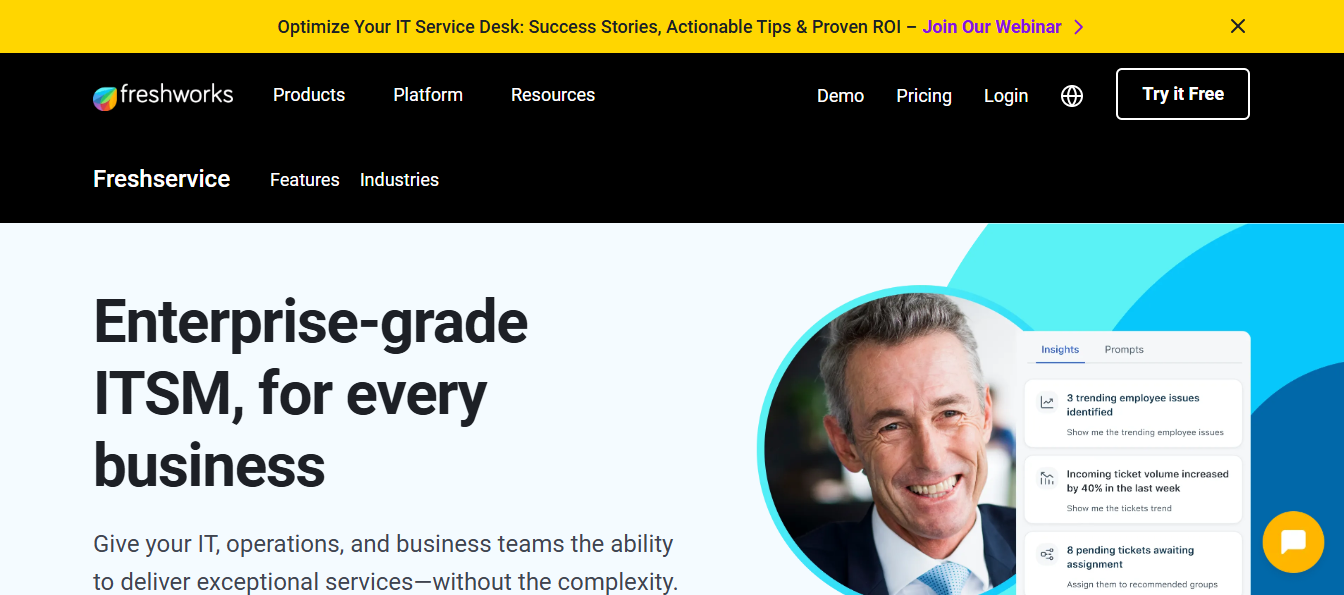
Freshservice is a cloud-based computer inventory software that provides service desk and IT service management (ITSM) solutions to help organizations automate IT processes. Although it focuses on service desk automation, Freshservice offers IT operations, IT assets, and project portfolio management functionalities.
Key Features and Benefits
-
Asset tracking and management
-
Incident management
-
Automated discovery
-
SaaS management
-
Lifecycle management
-
Contract management
-
Integrations
-
Availability in languages other than English
Pros
-
Self-Service Portals: Freshservice's self-service portals enable users to submit requests, access knowledge bases, and track tickets. This boosts productivity and satisfaction while reducing reliance on IT teams.
Cons
-
Limited Scalability for Small Businesses: Freshservice is a highly flexible system because of the many customization options it offers, however, they are targeted at enterprise companies.
Pricing
-
Pricing plans start at $19/agent/month.
ManageEngine Asset Explorer
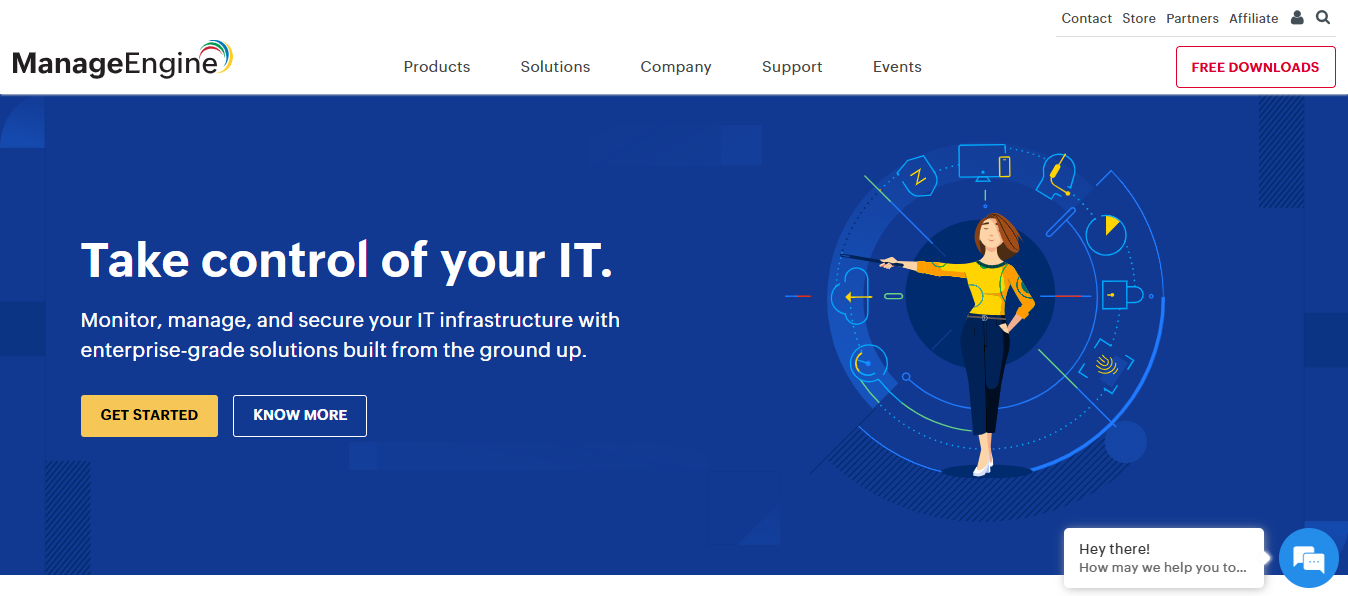
ManageEngine Asset Explorer is an automated asset discovery and computer inventory management software that helps organizations manage hardware and software assets throughout their lifecycle. AssetExplorer offers robust asset management capabilities like automatic asset discovery, a configuration management database, software asset management, software license compliance, and purchase order tracking.
Key Features and Benefits
-
Asset lifecycle management
-
Inventory management
-
Software license and asset management
-
Hardware and software tracking
-
Reporting capabilities
-
Purchase order management
Pros
-
Robust Tool Set: ManageEngine provides comprehensive asset management features, like inventory management, software license management, software asset management, purchase order management, asset lifecycle management, and tracking.
Cons
-
No Mobile Application: ManageEngine AssetExplorer does not offer a dedicated mobile application, which can limit the accessibility and convenience of managing assets on mobile devices.
Pricing
-
Asset Explorer has three versions: a free edition, a 30-day trial, and a professional version. A subscription model is also available starting at $95, which can be used for up to 5 computers and 5 users.
Spiceworks Inventory
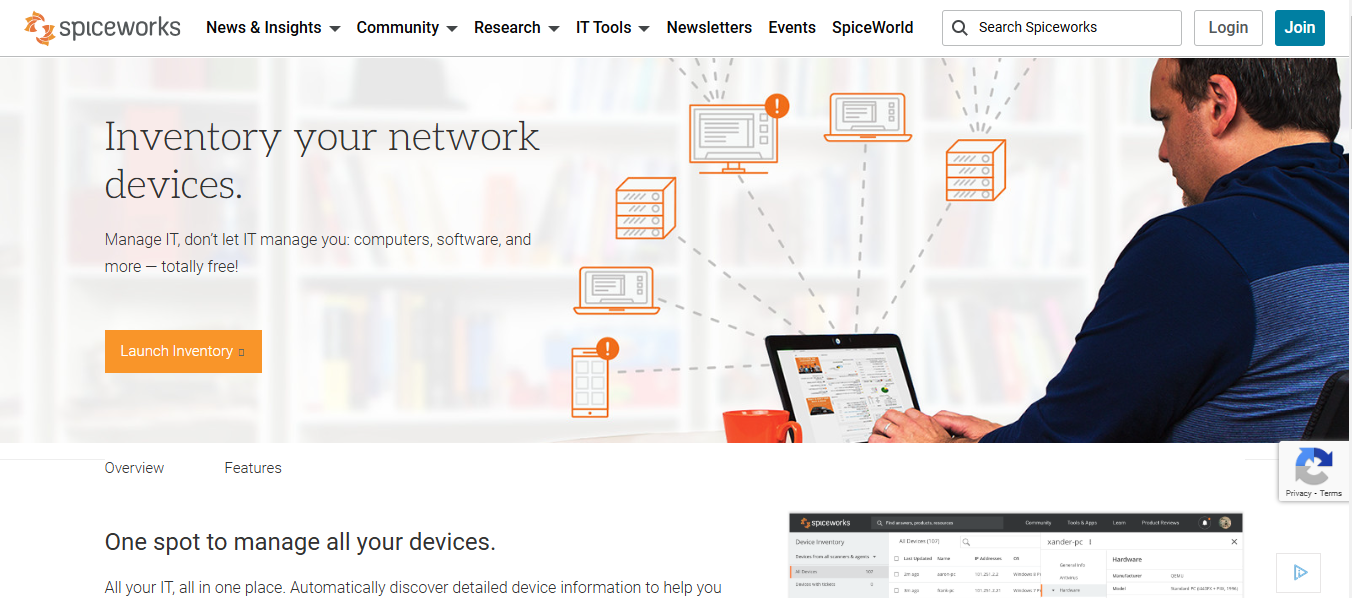
Spiceworks Inventory is a product created by the global technology service Spiceworks. It’s a free network inventory advisor and management tool that helps manage IT and offers basic and advanced network inventory management and hardware tracking.
Key Features and Benefits
-
Automatic device discovery
-
Reports
-
Scheduled scans
-
Available for Windows and macOS
Pros
-
Free of charge: Spiceworks Inventory is available for use at no cost, offering a budget-friendly solution for asset management.
Cons
-
Revenue through displayed ads: Spiceworks Inventory generates revenue by displaying advertisements within the dashboard. This can be seen as a downside for users who prefer an ad-free experience or have concerns about privacy and distractions caused by ads.
Pricing
-
Spiceworks Inventory is available to use free of charge.
Lansweeper
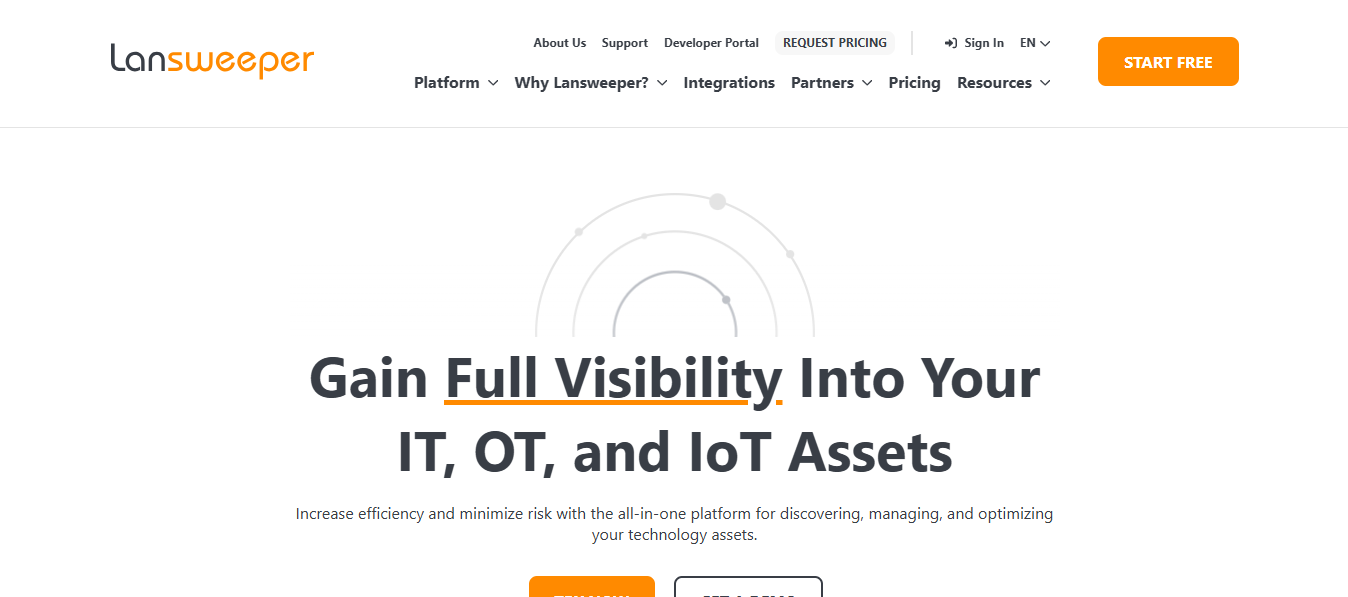
Lansweeper is a comprehensive computer inventory management software and software auditing tool that operates without the need for agents. It offers robust reporting features and automated software deployment. In addition, Lansweeper includes an integrated help desk and IT service desk, allowing users to conveniently receive, analyze, and resolve help tickets, all within a unified user interface.
Key Features and Benefits
-
Asset lifecycle management
-
Network management
-
Installing software & patches
-
Business intelligence & analytics
-
IT asset management
-
Optimizing software assets
Pros
-
Report templates: Lansweeper offers pre-designed report templates, making it easier for users to generate comprehensive reports based on the gathered data.
Cons
-
Emphasis on scanning: Lansweeper leans towards being a scanner tool rather than a dedicated computer inventory management system. This focus on scanning may limit the software's capabilities in terms of advanced inventory management features.
Pricing
-
Both a free version and paid versions are offered, with the free option allowing for a maximum of 100 assets. Upgrading to the Starter plan costs $2,408 per year.
ATERA
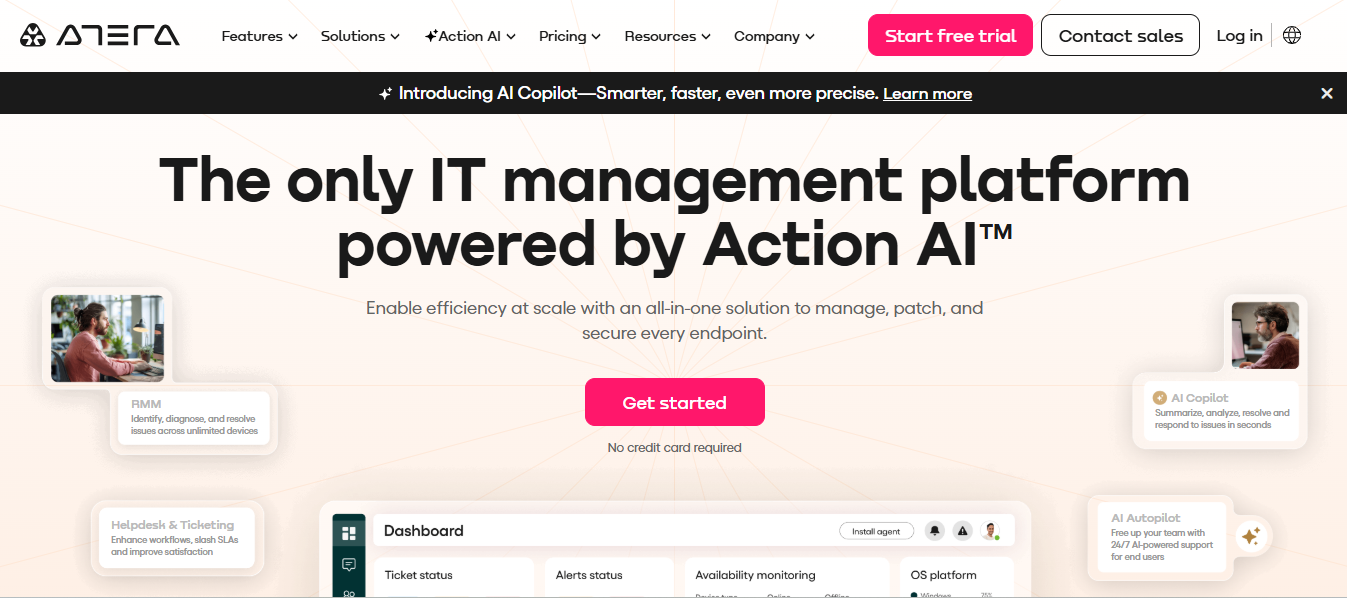
Atera offers an all-in-one computer inventory software solution for IT professionals and MSPs, providing remote monitoring and management, remote access, helpdesk, billing, and reporting on network devices from a single platform. Atera allows users to monitor devices from a single dashboard and automate tasks like patch management across different platforms.
Key Features and Benefits
-
Remote monitoring and managing
-
Remote access
-
Automated patch management
-
Helpdesk
-
Network discovery
-
Integrations
-
Performance issue alerts
Pros
-
Simple Inventory and Integrations: Atera simplifies hardware inventory management and service pack installation. It seamlessly integrates with support products, like antivirus and endpoint security tools, to enhance IT management capabilities.
-
Affordable: Atera offers a cost-effective solution for small to medium-sized companies, with per-technician pricing for better cost control and quick development of new features. It's received praise for its affordability.
Cons
-
Learning curve: If you are new to the interface, it may take some time to get used to it and understand its functions. However, once you become familiar with it, navigation should be straightforward.
Pricing
-
Pricing for IT departments begins at $149 per technician per month, while the pricing for MSPs starts at $99 per technician per month.
EZOffice Inventory management
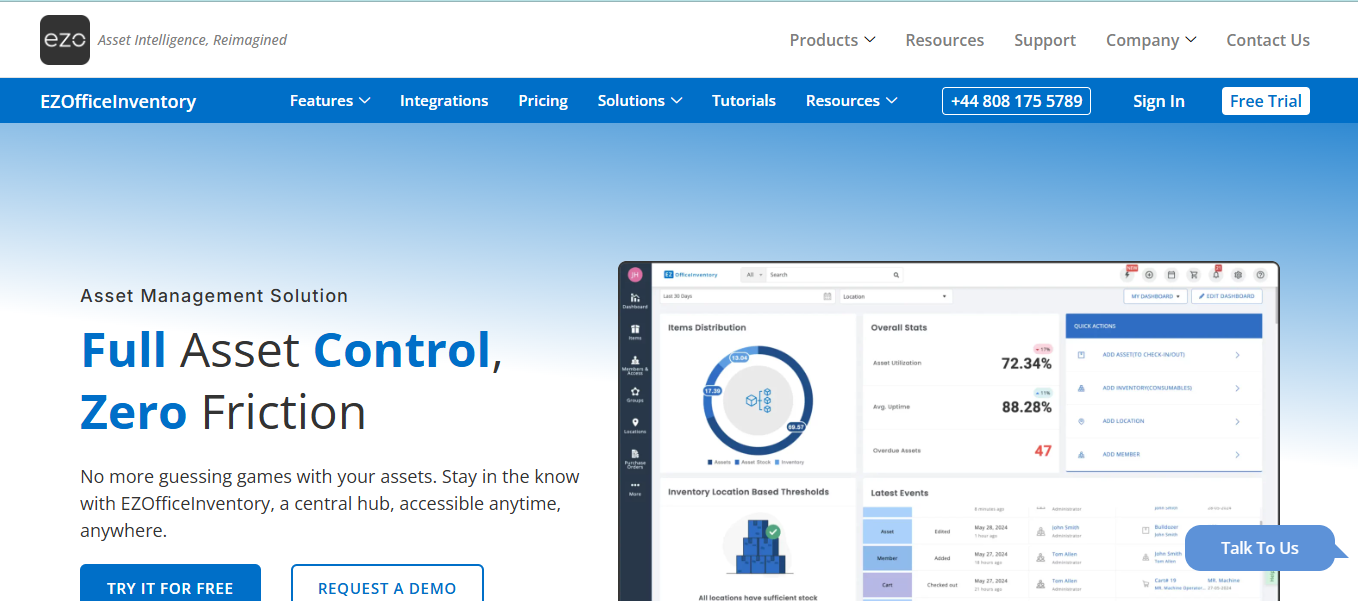
EZOfficeInventory is a versatile cloud-based computer inventory software that can be accessed through a web or mobile app. It streamlines operational workflows by enabling organizations to easily track and manage assets across multiple locations, conduct seamless audits, and generate reports.
Key Features and Benefits
-
Asset lifecycle management
-
Asset stock and inventory module
-
Quick check in & check out
-
RFID tracking
-
Purchase orders
-
Excel import and export
-
Locations
-
History tracking
-
Maintenance management
-
User management
Pros
-
Effective asset tracking: EZOffice Inventory proves helpful in tracking and viewing notes, history, and asset locations, making it easy to understand and manage IT assets.
Cons
-
Frustrating import process: The import process poses frustrations for some users due to limited options and difficulties caused by different spreadsheet headings, making data import more challenging.
Pricing
-
EZOffice Inventory has a free trial, and plans start at $95/month.
10-Strike Network Inventory Explorer
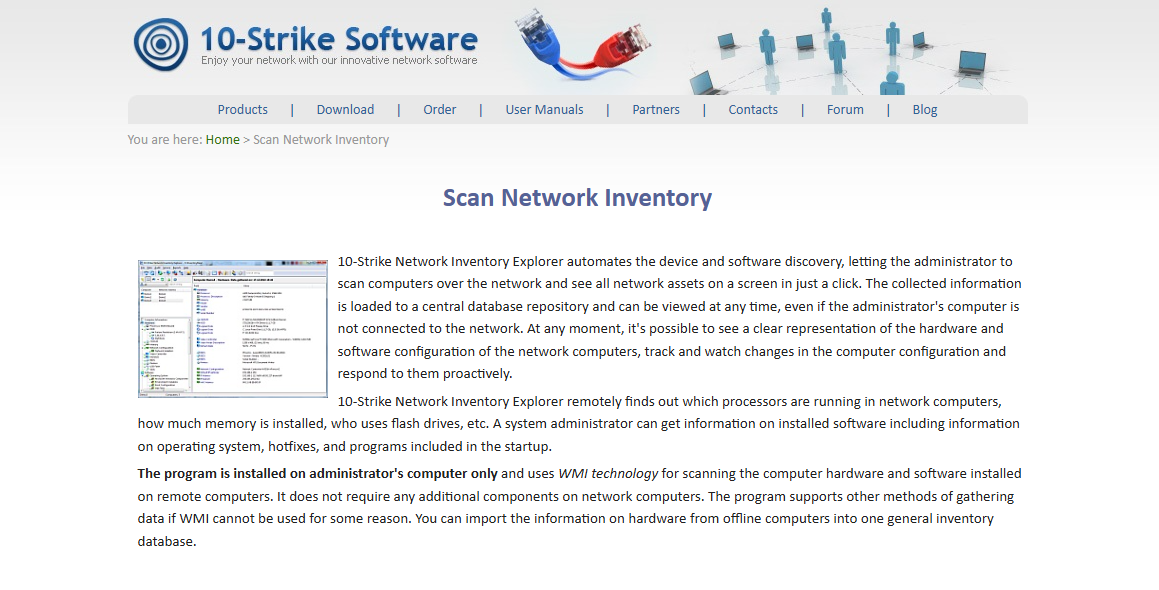
10-Strike Network Inventory Explorer is a network and hardware inventory management tool that automatically scans for devices on your network and helps you keep track of them. It also collects information on installed hardware and software and any changes.
Key Features and Benefits
-
Software and license audit
-
Hardware tracking and inventory
-
PC and hard drive health monitoring
-
Reports and inventory information exporting
Pros
-
Identifies and provides a list of computers: 10-Strike Network Inventory Explorer can discover and generate a comprehensive list of computers on a network.
Cons
-
Limited suitability for small networks: The computer inventory management software is primarily designed for small networks and may not be as effective or scalable for larger or more complex network environments.
Pricing
-
10-Strike Network Inventory Explorer has a free trial, while the standard version costs $79.95.
Ivanti Software Management
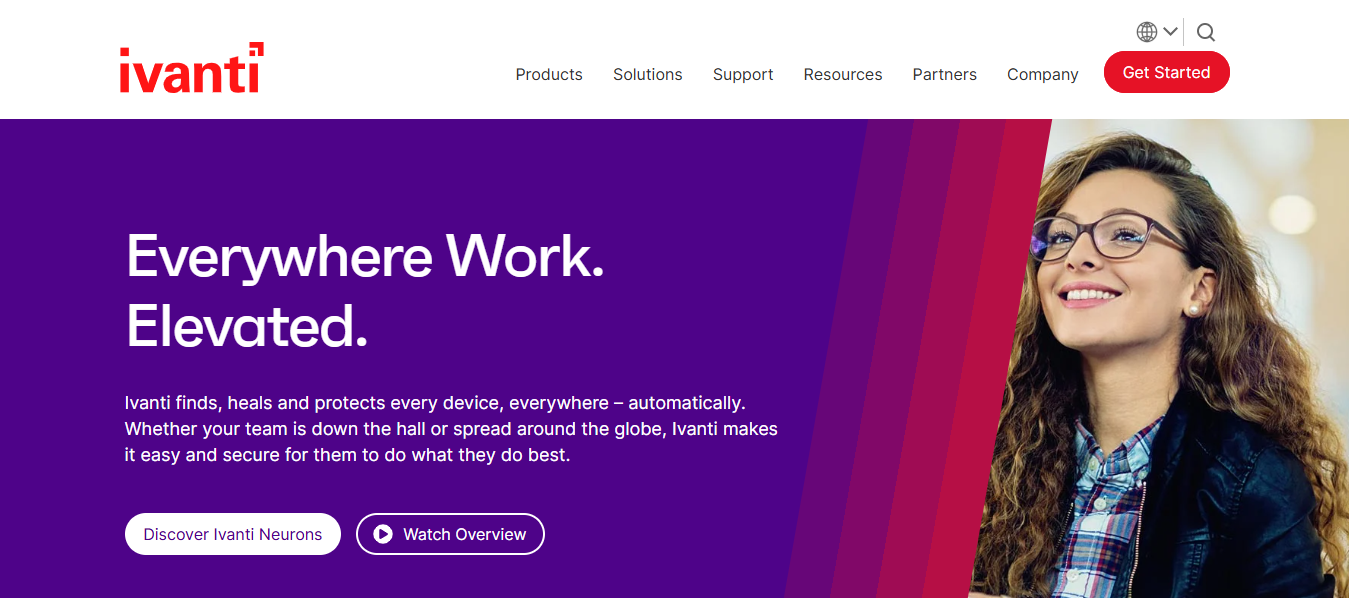
Ivanti Neurons is a comprehensive computer inventory management software aimed at medium-to-large organizations, offering real-time visibility and management of software, hardware, client, server, virtual, and cloud assets. Despite its powerful features, it may be complex for SMBs and novice users.
Key Features and Benefits
-
Mobile capabilities: remote asset management, barcode scanning
-
Lifecycle tracking: procurement to retirement
-
Contract and vendor management tools
-
IT asset data consolidation
-
Security and user experience optimization
Pros
-
Mobile and desktop workspaces: Provides flexibility and convenience for users to manage assets on mobile devices and desktop computers, enhancing accessibility and productivity.
-
Extensive tech support options: Offers multiple support methods, including phone, email, and chat, ensuring users have access to help when needed.
Cons
-
Hardware-heavy setup: The setup process requires significant hardware resources, which can be a barrier for some organizations and may involve higher initial costs.
-
No cloud-hosted option: Lacks a cloud-hosted version, limiting accessibility and scalability as users must rely on on-premises infrastructure.
Pricing
-
Available on request, varies by implementation scale and requirements.
UpKeep
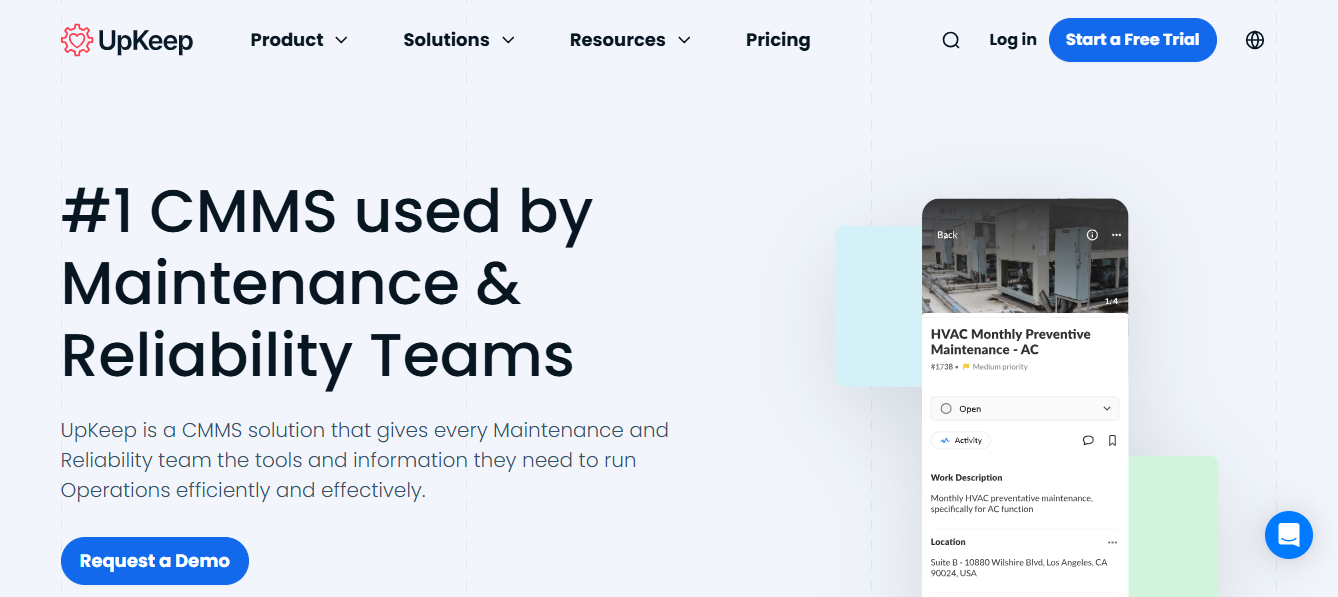
UpKeep is a computer inventory management software solution designed to serve as a one command center for maintenance and reliability. It is mobile-first software that allows workplaces to automate hardware inventory management, asset management, property maintenance, facility maintenance, and inventory management.
Key Features and Benefits
-
Create, manage, and update work requests for repairs and maintenance
-
Schedule preventive maintenance work in calendar view
-
Create and use digital maintenance checklists for routine inspections and more
-
Track operational downtime remotely
-
Time and cost tracking
-
Barcode generation and scanning
Pros
-
Mobile-first design: Optimized for mobile devices, allowing users to manage maintenance tasks on the go, enhancing flexibility and responsiveness.
-
Comprehensive asset and maintenance management: Offers robust features for asset management, property maintenance, facility maintenance, and inventory management, all in one platform.
-
Multi-platform availability: Accessible on Web, Desktop, and Mobile devices, providing users with versatile access options.
Cons
-
Less intuitive analytic reports: Users may find the analytics and reporting features less intuitive, requiring additional effort to generate useful insights.
-
Occasional stability issues: Some users experience slow loading times and occasional page load failures, affecting overall reliability.
Pricing
-
Starts at $20 per month and custom pricing plans.
SysAid
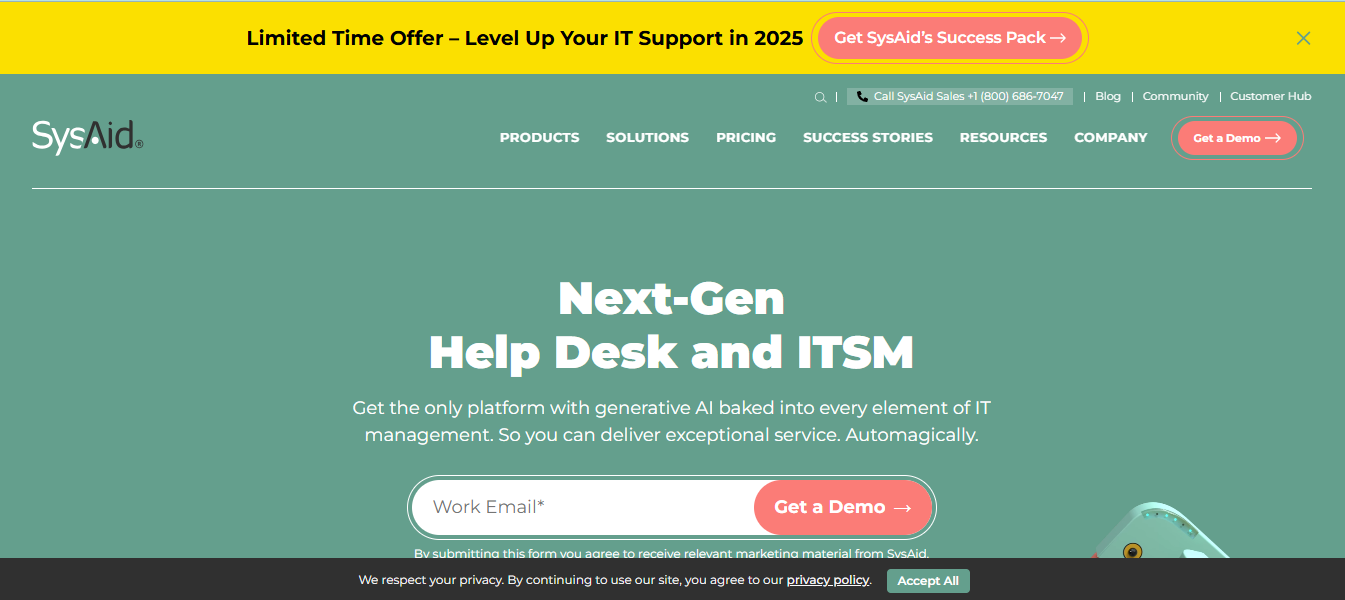
SysAid is an asset management system offering impressive network detection features and a detailed changelog. It focuses on integrated solutions, making it a strong contender for companies looking for comprehensive hardware inventory management.
Key Features and Benefits
-
Inventory tracking
-
Monitoring
-
Configuration Management Database (CMDB)
-
Asset tracking and license management
-
Network inventory and service requests
-
Custom reports
Pros
-
Great asset visualization: Provides clear and detailed visualization of assets, enhancing understanding and management of IT resources.
-
Impressive network detection: Offers robust network detection features, making identifying and managing network assets easier.
-
Hardware inventory: Includes comprehensive hardware inventory software capabilities, allowing organizations to keep track of their hardware assets efficiently.
Cons
-
Overly tabbed and sectioned user interface: The UI can be complex and cluttered, making navigation and usage more challenging for users.
-
No depreciation tracking: Lacks functionality for tracking asset depreciation, which can limit financial and asset lifecycle management.
Pricing
-
Custom quotes are available; a free trial is also offered.
Hofy
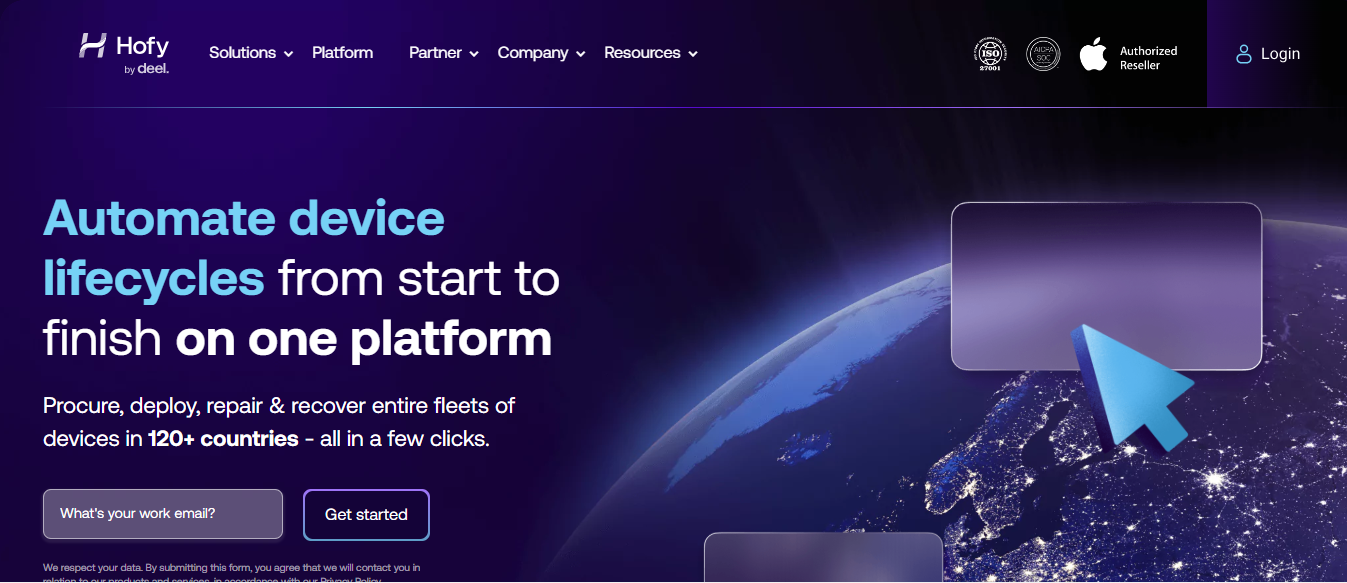
Hofy is a computer inventory management platform that streamlines hardware deployment and retrieval for businesses. It integrates well with key device management platforms like Apple Business Manager, making it suitable for companies with distributed teams. Hofy provides dedicated support representatives and conducts regular check-ins.
Key features
-
Pre-configured devices
-
Account management
-
Platform integrations
-
Global Logistics
Pros
-
Comprehensive assistance: Support representatives and account managers provide thorough support.
-
Integration capability: Works seamlessly with Apple Business Manager and similar platforms.
-
Worldwide reach: Efficiently handles global hardware deployment and retrieval.
Cons
-
High costs: Reviews often mention that the service is expensive, which may not be justified for all users.
-
Limited selection: The range of products may not meet all needs.
-
MDM limitations: The Mobile Device Management solution is less advanced than some competitors.
-
Remote control features: These features need improvement to match industry standards.
Pricing
-
Contact Hofy for pricing details.
WorkWize
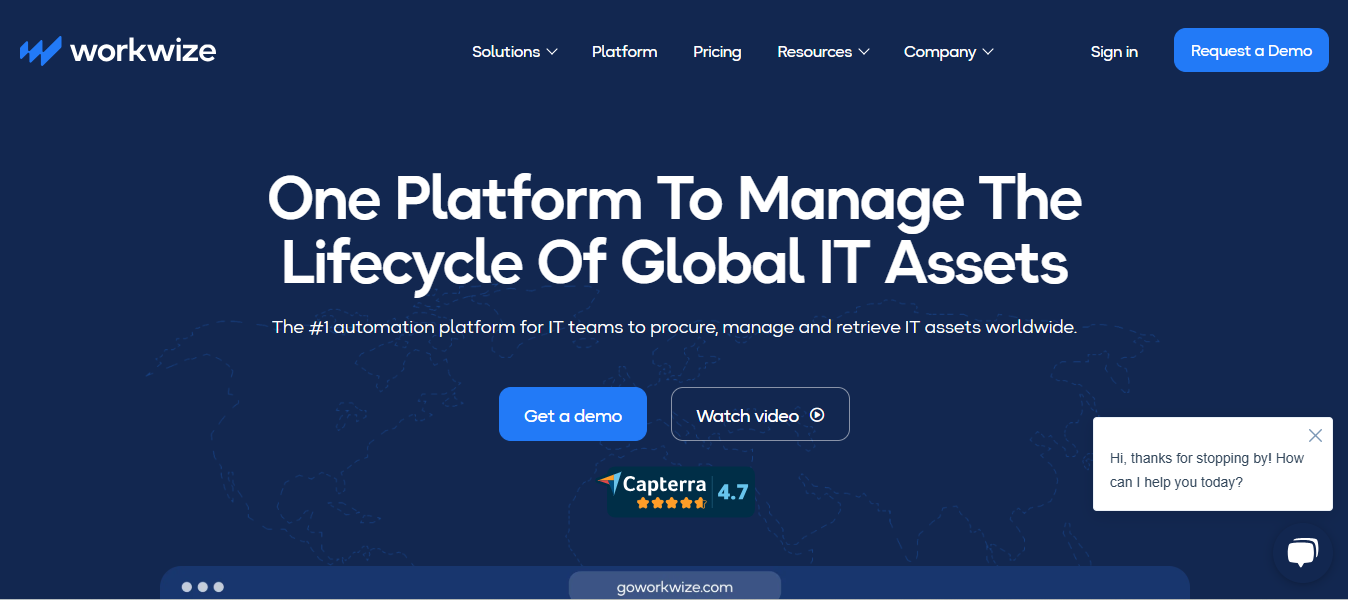
WorkWize is a computer inventory management software designed to boost team productivity through various tools, task management features, and collaboration capabilities. Although it provides useful functionalities, it has received mixed feedback, especially concerning customer support and platform performance.
Key features
-
Integrated Dashboard
-
Automated Processes
-
Integration with IT Tools
Pros
-
Productivity boost: Tools for effective task management and goal setting.
-
Collaboration support: Strong features for team collaboration and efficiency.
-
Full lifecycle coverage: Manages IT assets throughout their entire lifecycle.
Cons
-
Support issues: Many users report frustration with poor customer support.
-
Performance concerns: Slow loading times have been reported, affecting reliability.
-
Global reach: Currently lacks the capability to effectively serve companies with globally distributed teams beyond Europe and the United States.
Pricing
-
Contact WorkWize for pricing details.
Firstbase
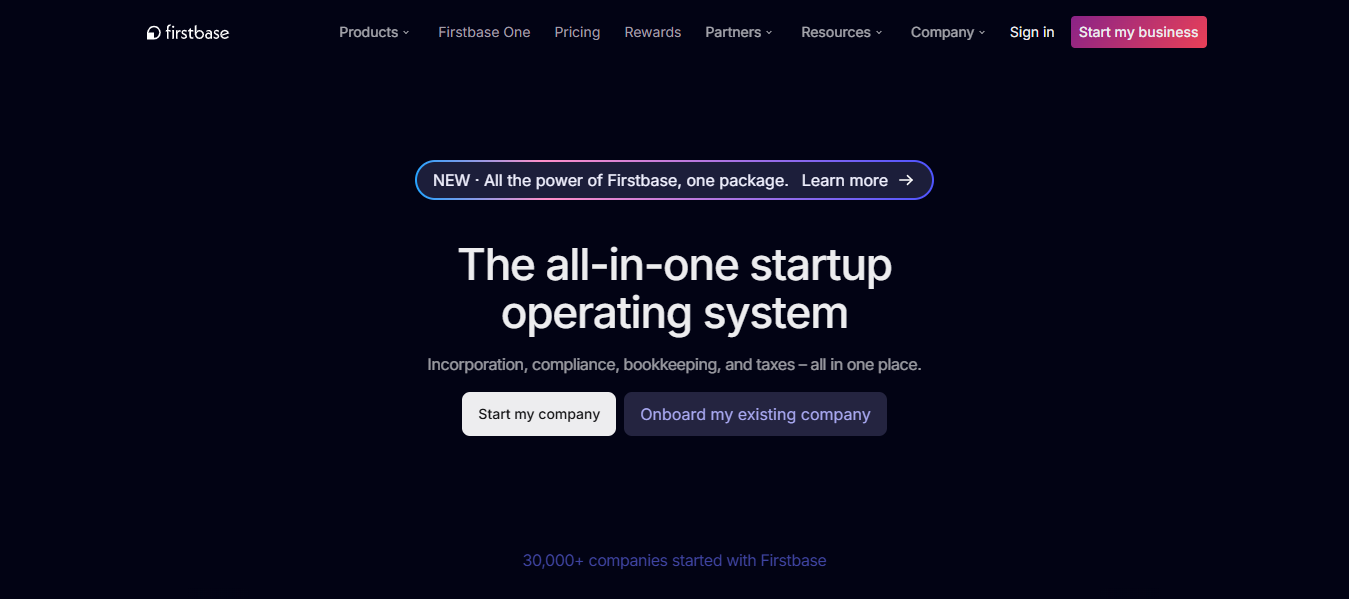
Firstbase is a computer inventory management software focused on simplifying hardware deployment and retrieval for remote-first companies. It automates the lifecycle management of IT assets and partners with global vendors for storage and management. Despite its benefits, it has some drawbacks that might impact its suitability for some organizations.
Key features
-
Hardware management
-
Lifecycle automation
-
Global vendor partnerships
-
Effective support
Pros
-
Ease of use: Simplifies hardware deployment and retrieval processes.
-
Responsive support: Quick and efficient customer service.
-
System integration: Works with existing MDM, HRIS, and ITSM systems.
Cons
-
Customization limits: Users want more control over individual asset selection.
-
Portal limitations: Lacks detailed audit logging and advanced filtering options.
-
Integration needs: Better integration with IT and SaaS applications is required.
-
Global reach: The platform primarily focuses on the United States and faces significant challenges in extending its services to other regions.
Pricing
-
Contact Firstbase for pricing details.
Allwhere
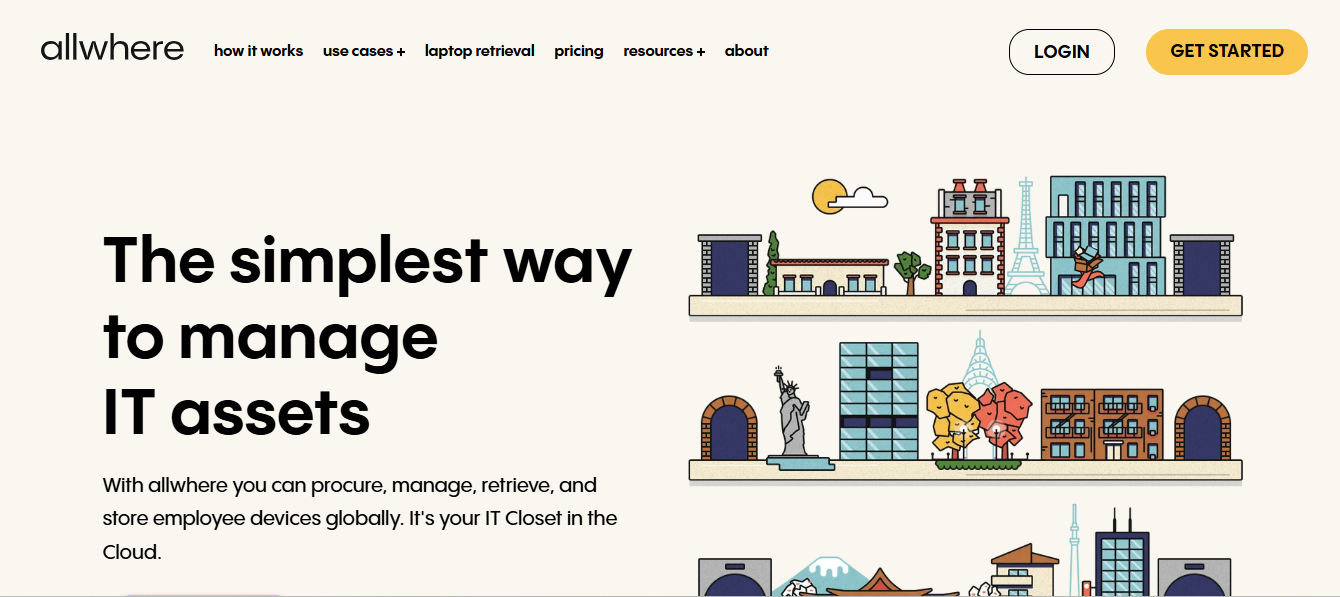
Allwhere is a computer inventory management software tool designed to enhance transparency, streamline logistics, and provide user autonomy. It assists remote and distributed teams by managing hardware in stock, in transit, and procured by employees. Although Allwhere has numerous strengths, it also faces growing challenges.
Key features
-
Hardware visibility
-
Real-time support
-
Logistics efficiency
-
Self-service portal
Pros
-
Clear visibility: Detailed insights into hardware status and availability.
-
Efficient logistics: Timely and reliable management of shipments and retrievals.
-
User control: Self-service options for equipment management.
Cons
-
Navigation challenges: Portal can be difficult to navigate due to UI/UX issues.
-
Scaling issues: Expansion has led to occasional delays and operational strain.
-
Support capacity: Needs additional resources to adequately meet growing support needs.
-
Global reach: Primarily targets North American markets and cannot effectively service teams based in regions like APAC.
Pricing
-
Contact Allwhere for pricing details.
How to choose the right computer inventory management system?
When selecting computer inventory management software for your distributed team, you must look for a tool to help reduce the workload on your IT administrators. When teams are remote, computer management adds a layer of complexity just because devices are spread across different locations.
Look for solutions that align with your workflows. Make a list of features you might need, such as scalability, reporting capabilities, integration with other systems, user-friendliness, and security measures. Let’s take a more in-depth look at the factors your company needs to consider in decision-making.
Factors to Consider
-
Scalability and flexibility: Choose scalable software to handle growing teams and increase inventory without compromising performance.
-
Compatibility with existing infrastructure: Ensure the software is compatible with your current systems and infrastructure. It should seamlessly integrate with your existing hardware, operating system, network, databases, and other relevant tools to avoid disruptions and enable smooth data flow.
-
Reporting and analytics capabilities: Look for computer inventory software that offers comprehensive reporting functionalities, including real-time data visualization, customizable reports, and predictive analytics. These features will empower you to make data-driven decisions and optimize inventory management strategies.
-
Integration with other systems: Consider how well the software integrates with your existing systems and tools. It should be able to connect with other crucial applications such as help desk software, ticketing systems, procurement tools, and accounting software.
-
User-friendliness and ease of implementation: The computer inventory software interface should be intuitive, allowing your team members to navigate the system effortlessly. Additionally, consider the implementation process and ensure it aligns with your team's capabilities and available resources.
-
Security and data protection measures: Verify that the computer inventory software offers robust security features such as data encryption, user access controls, and regular backups. It should comply with industry standards and regulations to safeguard your sensitive information and protect against potential cyber threats.
-
By carefully evaluating these factors, you can select a computer inventory software, asset management tool, or software solution that meets your distributed team's unique requirements. It will also ensure that you make an informed decision and set your team up for success.
Evaluating the computer inventory software compatibility with your team’s workflow and processes
When choosing computer inventory management software for your team, evaluate how well it aligns with your team’s needs and working style. While an option may offer many novelty features, it might not be a good match in the long run if it doesn’t serve your team’s current way of working.
To avoid repeating the selection process, consider aspects like workflow integration, customization options, and the training level required by its implementation. Let’s examine each.
-
Workflow integration: Assess how the computer inventory software fits your team's workflow. Will it require significant adjustments or modifications to accommodate the software? Look for a solution that seamlessly integrates with your team's processes for minimal disruption.
-
Customization options: Determine if the computer inventory management software allows customization to adapt to your team's requirements. Flexibility in configuring workflows and processes can enhance productivity and streamline operations.
-
Training and support: Consider the training and support required to implement the computer inventory software successfully. Ensure that the software provider offers comprehensive training materials, documentation, and customer support to assist your team during onboarding.
Trial periods and demos for hands-on experience
Before making a final decision, take advantage of trial periods and demo software providers offer. This hands-on experience allows your team to explore the software's functionalities, user interface, and compatibility with your specific needs. By testing the software in a real-world scenario, you can assess its effectiveness, ease of use, and suitability for your distributed team's requirements.
Challenges of computer inventory management software for distributed teams

Computer inventory management software provides many advantages for distributed teams, but there are also specific challenges that organizations need to overcome. Some of the significant challenges that distributed teams might encounter when using computer inventory management software are:
-
Maintenance: Managing hardware assets for distributed teams is complex, with devices spread across various locations. Updating the software database requires dedicated effort and coordination to ensure data accuracy.
-
Asset Tracking: Managing assets and maintaining accurate records can be difficult for remote teams. As the amount of data and connected devices increases, it becomes more critical to have visibility over company assets through effective tracking and location status.
-
Storage: Without physical offices, remote teams may struggle to store devices. This often leads to IT managers or network administrators having stock in their homes, even if it is unsafe.
-
Retrievals: Another challenge for distributed teams is being able to retrieve company devices after an employee leaves the company. Usually, the process can become tedious as managers have to deal with shipping, customs, and even communication issues with existing workers.
How does computer inventory software work?
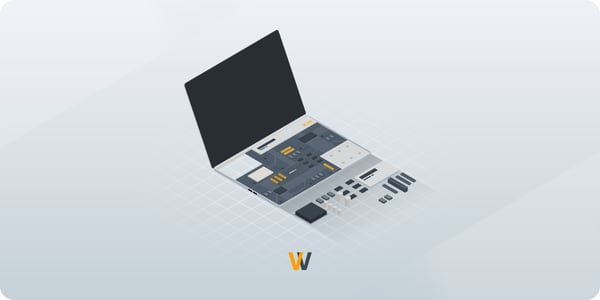
Computer inventory software operates by utilizing a combination of automated processes and centralized data management to effectively track and manage computer assets throughout their lifecycle. Initially, the software performs a comprehensive discovery of all devices connected to the network, identifying each piece of hardware and software installed. This discovery process is often automated, allowing the software to continuously update the inventory as new devices are added or removed.
Once the inventory is established, the software provides a centralized dashboard where IT administrators can access real-time data about each asset, including details such as serial numbers, device status, location, and user assignments. This centralized view enables IT teams to monitor the health and performance of devices, ensuring they are functioning optimally and are compliant with company policies.
Additionally, computer inventory software often includes features for managing software licenses, tracking software usage, and ensuring that all applications are up-to-date with the latest patches and updates. This helps prevent security vulnerabilities and ensures compliance with licensing agreements.
The software also facilitates asset lifecycle management by providing tools for planning hardware upgrades, scheduling maintenance, and managing asset disposal. By generating detailed reports and analytics, the software empowers organizations to make informed decisions about their IT infrastructure, optimize resource allocation, and reduce costs associated with asset management.
Overall, computer inventory software streamlines the complex task of managing IT assets, providing organizations with the tools needed to maintain an efficient and secure IT environment, especially in the context of distributed teams and remote work arrangements.
Wrapping up
An asset management solution like GroWrk is the future of the computer inventory management software, because it offers distributed teams a comprehensive view of their IT estate, regardless of location, while including features such as device procurement and recovery.
GroWrk’s inventory and asset management software can help you manage your IT assets, streamline inventory tracking and organization, improve accuracy and efficiency, and reduce costs.
Book a demo call to see how GroWrk can help your company meet its growth goals.
FAQs
What is the best program to keep track of inventory?
The best program for tracking inventory depends on your specific needs, but popular choices include GroWrk, Asset Panda, and ManageEngine Asset Explorer, which offer comprehensive features for managing computer inventory.
How do I keep track of my inventory on my computer?
To keep track of inventory on your computer, use a dedicated IT inventory management system like Lansweeper or Freshservice. These tools offer automated tracking, reporting, and management of hardware and software assets.
What is computer inventory software?
Computer inventory software is a tool designed to manage and track computer assets, including hardware and software, throughout their lifecycle. It provides IT administrators with vital automated software usage data, helping them optimize asset utilization and ensure software license compliance.
Which computer inventory software system is used to maintain inventory?
Computer inventory software systems like EZOffice Inventory, Ivanti Software Management, and Atera are commonly used to maintain inventory. These systems offer features such as asset tracking, lifecycle management, and integration with other IT tools to streamline inventory processes
What is the difference between network inventory software and computer inventory software?
While both types of software aim to optimize IT asset management, network inventory software provides a broader view of the network environment, whereas computer inventory software offers a more detailed look at individual computing devices. Together, they enable organizations to maintain a well-organized and efficient IT infrastructure, supporting both network and device-level management.


